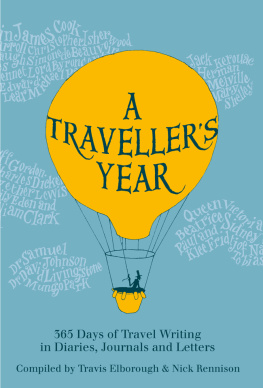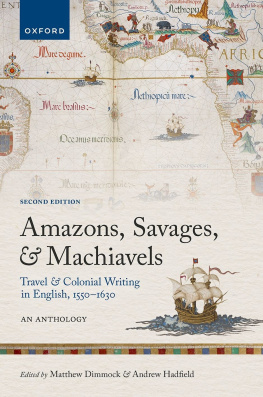
Manohar Shetty has published seven books of poems including Domestic Creatures (Oxford University Press, New Delhi) and Living Room (HarperCollins, New Delhi). Several collections feature his work notably, The Oxford India Anthology of Twelve Modern Indian Poets (ed. Arvind Krishna Mehrotra, Oxford University Press, New Delhi), as well as anthologies edited by Eunice de Souza and Vilas Sarang. Shetty has been a Homi Bhabha Fellow and a Senior Sahitya Akademi Fellow. He has also edited Ferry Crossing: Short Stories from Goa (Penguin India). Manohar has lived in Goa since 1985.

Published by
Rupa Publications India Pvt. Ltd 2014
7/16, Ansari Road, Daryaganj
New Delhi 110002
Anthology copyright Rupa Publications India Pvt. Ltd 2014
Introduction copyright Manohar Shetty 2014
The shady invasion of the beach umbrella copyright Manohar Shetty 2014 Copyright of individual essays remain with the individual authors and translators.
Pages 304-307 are an extension of the copyright page.
All rights reserved.
No part of this publication may be reproduced, transmitted, or stored in a retrieval system, in any form or by any means, electronic, mechanical, photocopying, recording or otherwise, without the prior permission of the publisher.
ISBN: 978-81-291-2926-0
First impression 2014
10 9 8 7 6 5 4 3 2 1
This book is sold subject to the condition that it shall not, by way of trade or otherwise, be lent, resold, hired out, or otherwise circulated, without the publishers prior consent, in any form of binding or cover other than that in which it is published.
CONTENTS
Introduction
Manohar Shetty
Centuries before Goa became the tourist destination it is today, several European travellers set forth on hazardous sea journeys to explore the once-fabled metropolis of Old Goa and its surroundings. The galaxy of inveterate travellers and chroniclers, who saw Goa both in its prime and in its decline, included the Dutch merchant and spy John Huyghen Van Linschoten, the Italian nobleman Pietro Della Valle, the jewel merchant from France, Jean-Baptiste Tavernier, the pioneering English entrepreneur Ralph Fitch, the German diplomat John Albert de Mendelslo, the young Italian slave trader Francesco Carletti, the French sailor and soldier Pyrard de Laval, the Portuguese officials Duarte Barbosa and Tom Pires, the French priests Carre Barthelemy and Cottineau de Kloguen, the Italian writer and chronicler of the Moghul empire, Niccolao Manucci, the Englishmen Dr John Fryer and Dr Claudius Buchanan, the Scot Captain Alexander Hamilton, and Richard F. Burton, the Victorian Age author of One Thousand and One Nights and co-translator of The Kama Sutra, and his wife Lady Isabel Burton.
All these travellers and chroniclers have left behind an invaluable legacy on the social customs, economic activities, including the trading of slaves and horses, the sartorial styles and the culinary habits of the times. Among the pioneers was John Huyghen Van Linschoten, who spent almost six years in Goa from 1583 to 1588 during which time he also clandestinely copied confidential Portuguese nautical maps and charts. Despite his somewhat dubious reputation as a spy, he opened up the horizons for later adventurers and seafarers who relied on his storehouse of sea-routes to India, Malacca and beyond Malacca in the Malay Archipelago, and up to the Chinese coasts. Linschoten was also an acute observer and meticulous recorder of the decadence in Portuguese Goa during its incipient decline from its giddy heights of glory. He died in 1611, aged forty-eight.
Even before Linschoten came the Portuguese factor Duarte Barbosa, who arrived before the Portuguese conquest of Goa in 1510 and lived in India for about sixteen years. In 1519, Barbosa joined his legendary brother-in-law Ferdinand Magellan who circumnavigated the globe and conclusively proved that the earth was round. Barbosas book was one of the earliest examples of travel literature. Written in 1516, it found its way into print only 300 years later as The Book of Duarte Barbosa.
The most colourful of the intrepid travellers was the Italian Pietro Della Valle. Born in 1586, Della Valle was the scion of an illustrious family in Rome. After a voyage to Baghdad in 1616, he married an eighteen-year-old Assyrian Christian, Maani Giorida. Four years later the young bride died near the Gulf of Ormuz (Hormuz in Iran) from fever and an unhealthy climate. The grief-stricken nobleman had her body embalmed and preserved in a coffin. He kept the body on board when the ship arrived in Surat on 10 February 1623. From Surat he travelled to Calicutthe southernmost tip of his travels in India. He left Goa on 16 November 1624 for Muscat, and from there for Rome, still accompanied by his embalmed wife. Finally, he reached Rome in March 1626. It was only here, more than three years after her death, that Della Valle buried the remains of his beloved wife in the family vault.
A contemporary of Pietro Della Valle, Francois Pyrard has been described as a talkative and observant Frenchman of the seaman class. He was arrested by the Portuguese after he lost his official papers in a shipwreck and was dumped into a dungeon in Calicut. His health deteriorating, he was sent in chains to Goa, where he was admitted in the Jesuit Hospital, then reputed to be the finest such institution in all of Europe and Asia. Pyrard recovered, and to save himself further long-term incarceration, volunteered to serve in the Portuguese army. During his ten years of service, he was a keen and insightful observer of the Portuguese and the surrounding environment.
Another Frenchman, Jean-Baptiste Tavernier, who arrived in Goa more than thirty years later, was a wealthy and famous jewel merchant, dealing mainly in diamonds with Indian royalty, high-ranked Portuguese officials and local businessmen. He spent a week in Goa in 1641 and a further few months seven years later when he noted the rapid decline in the prosperity of the Portuguese, some of who even secretly approached him for alms. Tavernier was also an accomplished raconteur as can be seen from his entertaining account of the adventures and misadventures of two of his fellow Frenchmen, du Belloy and des Merestes, one of whom met an ignominious end and the other a more heroic one.
The young Italian slave trader and merchant Francesco Carletti arrived in Goa exactly at the turn of the 16th century when he was just twenty-one years old. A few years later, in 1606, he would be known for introducing chocolate to Italy from Central America. During his twenty-month sojourn in Goa, he was much enamoured of the women, especially the Bengali women with Portuguese blood who were the most desirous creatures imaginable. He appeared fixated by their members (breasts) so rounded as to seem to have been formed on a lathe, and was also struck by the apparent possessiveness of their Portuguese husbands and their lubricity shared in no small measure by their wives due to the continuous heat of the region. The men apparently were so possessive of their wives that at any hint of infidelity they killed them every day, which they can do freely because it is permitted by the laws of the Portuguese. Carletti, however, refrains from elucidating on his own conquests, if any.
Among the first Englishmen to arrive was the merchant Ralph Fitch who was brought to Goa in 1583 after being arrested in Ormuz by the Portuguese on an unspecified crime. The Jesuit priest from Oxford, Thomas Stephens, already in Goa at the time, offered surety to the Portuguese but Fitch escaped from Goa and travelled all round India, including spending a brief interlude in the court of Akbar. It was Fitchs pioneering account on India and Burma that first whetted the appetite of the East India Company on the riches to be had in the subcontinent.
Next page













